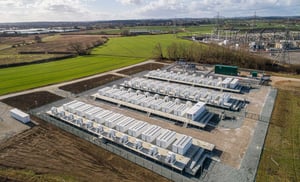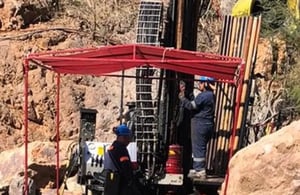Glencore plc (GLEN.L), a stalwart in the Basic Materials sector, operates predominantly within the Other Industrial Metals & Mining industry. With its headquarters in Baar, Switzerland, Glencore boasts a market capitalisation of $32.27 billion, marking it as a significant player in the global commodities market. As investors consider the potential of this mining giant, there are several financial metrics and market dynamics to examine.
Currently priced at 268.45 GBp, Glencore’s stock has experienced a dramatic 52-week range, oscillating between 230.05 and 501.50 GBp. The stock’s stability, reflected in a price change of 0.70 GBp (0.00%), indicates that it is maintaining equilibrium amidst market fluctuations. However, with a potential upside of 45.49% based on an average target price of 390.57 GBp, analysts remain bullish on Glencore’s prospects. The consensus is overwhelmingly positive, with 15 buy ratings and only one hold rating, and notably, no sell recommendations.
Despite its promising outlook, Glencore’s valuation metrics present a mixed picture. The absence of a P/E ratio and the extraordinarily high forward P/E of 763.71 suggest that the company is trading at a premium relative to its earnings expectations. This may indicate investor optimism about future growth or, conversely, an overvaluation relative to current earnings potential. The lack of PEG, Price/Book, and Price/Sales ratios further complicates a traditional valuation assessment, leaving investors to weigh potential growth against current earnings.
Performance metrics reveal more about Glencore’s operational health. With a modest revenue growth of 3.10%, the company is not experiencing explosive growth but is maintaining a steady upward trajectory. However, a negative EPS of -0.10 and a return on equity of -7.29% highlight profitability challenges. Despite these hurdles, Glencore generates robust free cash flow, amounting to over $5.6 billion, which provides a strong foundation for future investments and potential shareholder returns.
Glencore’s dividend yield stands at a respectable 2.95%, but the payout ratio of 131.12% raises questions about sustainability. This figure suggests that Glencore is paying out more in dividends than it earns, which could be a red flag for income-focused investors concerned about the long-term viability of such payouts.
Technical indicators offer further insights into Glencore’s stock movements. The 50-day and 200-day moving averages, at 297.04 and 368.46 respectively, suggest the stock is currently trading below its longer-term average, potentially indicating a buying opportunity. The Relative Strength Index (RSI) of 65.61 is nearing overbought territory, and the negative MACD and signal line values (-10.41 and -14.68) suggest bearish momentum, highlighting the need for investors to remain cautious.
Glencore’s business operations span the globe, engaging in the production, marketing, and distribution of a vast array of commodities such as copper, cobalt, coal, and crude oil. Its extensive reach and diversified portfolio provide significant advantages, but also expose it to geopolitical risks and fluctuating commodity prices. As the world transitions to sustainable energy, Glencore’s involvement in battery metals like cobalt positions it well for future growth, although this transition could also pressure its traditional energy segments.
For investors, Glencore represents a complex investment proposition, blending the potential for significant returns with the inherent risks of the commodities market. As the company navigates this landscape, investors must weigh the company’s strategic moves, market conditions, and their own risk tolerance. With a solid market presence and ambitious targets, Glencore remains a company to watch in the evolving industrial metals and mining sector.





































